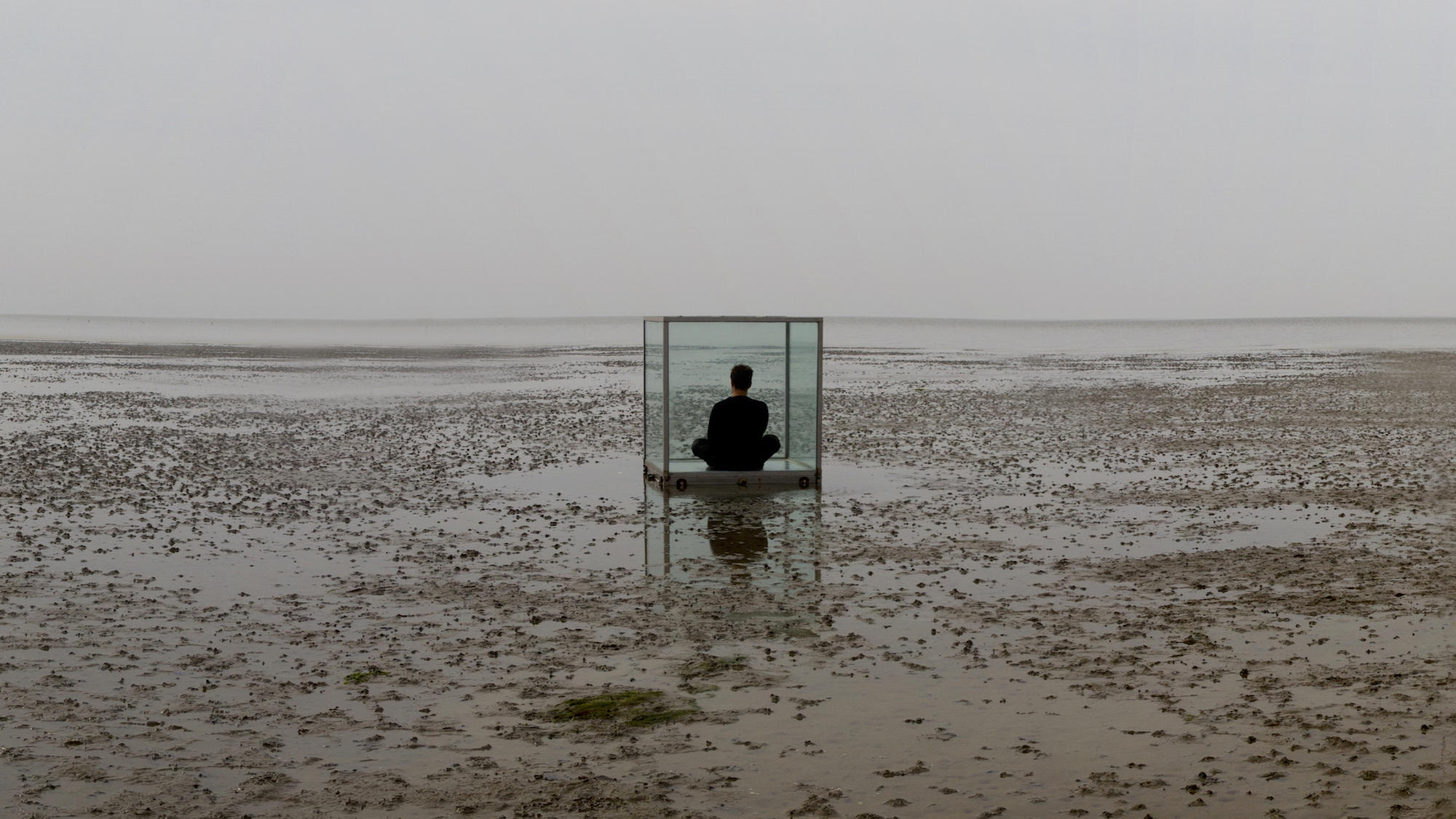
Johannes Bellinkx - Reverse (Oerol 2018) - Johannes Bellinkx - Reverse (Oerol 2018)
Off the coast of Leeuwarden, provincial capital and 2018 European Capital of Culture, the Oerol festival is breaking attendance records on Terschelling Island (Northern Netherlands). As in previous years, environmental installations and performances feature alongside more traditional festival events. However, this year, a whole number of artists seem to have conducted unusual studies on time.
Loudspeakers are lined up along 1 kilometre of beach like lamp posts under the setting sun. Four female silhouettes emerge from the dunes and head out towards the waves. With their performance installation, “Signaal bij Schemerdonker” (Signal at Dusk), sound artists Strijbos & Van Rikswik have created an ode to the elements, the passing ocean liners (with the busy Rotterdam-Hamburg line on the horizon) and the sun… Their four mermaids dialogue with foghorns and cling to the posts like semaphores, sometimes shipwrecked victims, sometimes enchantresses drawing others onto the rocks, captivating the three hundred or so spectators along the beach. As the sun sets, the song fades, but the incandescence of the moment remains fixed in the eyes and ears of the audience.

Landscape is a human invention in the Netherlands, where each forest, dyke and polder bears the marks of mankind. Set designer Theun Mosk presents a gentle approach to this theme through his “End of Nature” trail. At the entrance to a bird reserve, a receptionist behind a desk gives us some advice before sending us on a marked path through the moorland, featuring dunes, peatland, cut-back vegetation… and further on, a chair, a silhouette of a gatekeeper in uniform, and a number of plaques. One of these plaques is located at a viewpoint where a young museum guard can be seen reading under a tree, featuring the words “Man in Nature”. This is a very pictorial approach to pop-up land art that echoes the words of the great novelist and essayist D.H. Lawrence: “Landscape is always waiting for something to occupy it” (“Introduction to these Paintings”, 1929).
Playwright Lotte Van den Berg explains that “the distinction we make between nature and man-made landscape is no longer helpful”. She is keeping a close eye on her maritime installation consisting of a glass cage in which a volunteer spectator is enclosed for several hours to experience a tide cycle (“We have never been modern” - title borrowed from Bruno Latour). Does the spectator enclosed in this box feel the “tranquillity tinged with terror” that art historian Alain Corbin uses to define the sublime (“The Lure of the Sea”, 1988)? He explains that “the infinite space of the sea is tiring for vision”… Lotte Van den Berg would like to transport her installation to a city or desert. It does not seek to shock or even offer discovery (the spectacle of the sea has been well-known for a long time), but rather to rediscover the passage of time.
 Lotte Van Den Berg - We Have Never Been Modern (Oerol 2018) © Oski Collado
Lotte Van Den Berg - We Have Never Been Modern (Oerol 2018) © Oski Collado
“There is a great divide between Western and non-European cultures. We are very future-oriented… In African or Asian cultures, time is never wasted, it simply increases.” Johannes Bellinkx (Oerol 2018)
This issue seems to drive Johannes Bellinkx in his experiment “Reverse”. Spectators walk backwards along a line on the ground for around three quarters of an hour to return to where it all began… Could this be a way of stopping the passage of time? “When walking backwards, you only have your peripheral vision. The line becomes your sole point of reference”, explains Johannes Bellinkx, an actor trained in mime and physical theatre. “There is a great divide between Western and non-European cultures. We are very future-oriented… In African or Asian cultures, time is never wasted, it simply increases.”
It is on the other side of the North Sea, in desolate East Anglia, that W.G. Sebald measured time by walking, this time the right way round, in a wandering journey haunted by abandonment and dissipated dreams (“The Rings of Saturn”, 1995). In one of his frequent digressions, this expat writer considers the end of its tyrannical rule, reflecting that “The dissolution of time would dissolve all bonds.”
